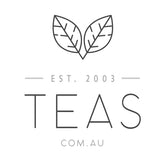Tea Drinkers Reap Blood Pressure Benefits
Posted by BEV A

Drinking a Half-Cup of Tea per Day Cuts Hypertension Risk in Half
Drinking as little as a half-cup of green or oolong tea per day may lower the risk of high blood pressure by nearly 50%, according to a new study of Chinese tea drinkers.
Researchers found that men and women who drank tea on a daily basis for at least a year were much less likely to develop hypertension than those who didn’t, and the more tea they drank, the bigger the benefits.
Tea is the second most consumed beverage in the world. Water is first.
Hypertension, or high blood pressure, is the most common form of heart disease and affects about 20% of the adult population in many countries. The condition is associated with stroke, heart failure, and kidney dysfunction and is a major risk factor for heart-related death.
“A link between tea drinking and blood pressure reduction has been postulated for decades in general health care in Chinese populations,” write researcher Yi-Ching Yan, MD, MPH, of the medical college of National Cheng Kung University in Taiwan, and colleagues.
In recent years, researchers say there has been growing interest in exploring the role of antioxidant compounds called flavonoids found in tea that may protect against heart disease.
But researchers say few studies have examined the long-term effects of tea drinking on the risk of hypertension, and the results so far have been conflicting. They say this study is the first on the issue to use a large number of people and detailed information about tea consumption and other lifestyle and dietary factors associated with hypertension risk.
Drinking Tea Lowers Blood Pressure
In the study, which appears in the July 26 issue of The Archives of Internal Medicine, researchers looked at the effect of tea drinking over the past decades on the risk of developing high blood pressure in 1,507 Chinese men and women living in Taiwan who had no previous history of high blood pressure.
Because the size of the teacup used varies widely in Chinese culture, the participants were asked to provide details about what kind of cup was used, how the tea was prepared, the amount drank, and the frequency per week in order to calculate the average tea consumption per day.
(By Jennifer Gardner, WebMDHealth, July 2004)
Article URL: http://www.webmd.com/content/article/91/101106.html
SHARE:

AUSTRALIA'S FINEST LOOSE LEAF TEAS
Explore Australia's largest selection of Premium Teas & All-Natural Organic Herbal Blends.

